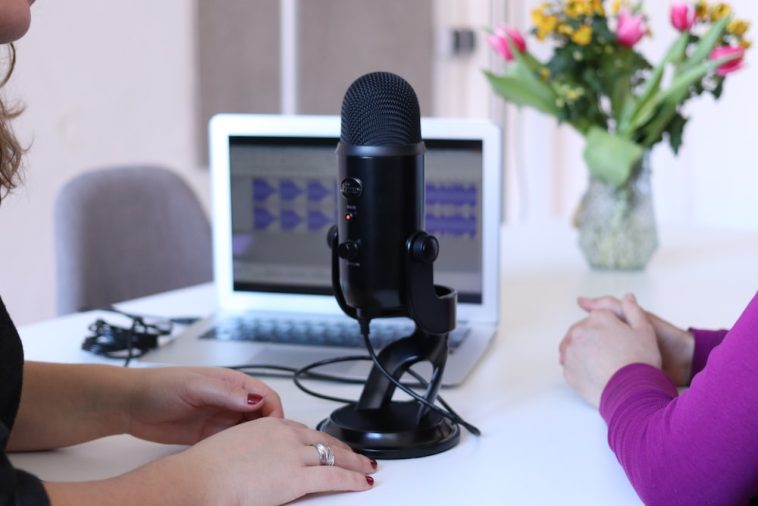Introduction.
Designing a podcast isn’t just about hitting “record” and uploading it online. From choosing a theme to defining the structure, creating a podcast that engages listeners from the first episode requires careful planning.
Whether you want to entertain, inform, or build a community around your podcast, each step in the process brings you closer to building something memorable.
In this guide, I’ll walk through the essentials of designing a podcast, from figuring out your target audience and deciding on a format to selecting cover art, music, and more.
There are some surprising details you might not have considered, like how the length of your episodes could impact listener retention or how choosing the right music sets the tone from the start.
By the end, you’ll have all the basics down and be ready to get your voice out there.
How Do I Design a Podcast?
The heart of a successful podcast is all about structure, personality, and connecting with listeners. Here’s a look at the key elements you’ll want to consider.
1. Define Your Purpose and Audience.
Knowing your audience’s preferences can help refine your podcast’s tone, topic, and style. For instance, if you’re targeting young entrepreneurs, your topics might lean towards innovation and personal growth. This purpose acts as the core around which everything else is built. Ask yourself:
- What am I passionate about? Choose a theme you care deeply about—it will keep you motivated.
- Who is my audience? What are their interests, and why would they listen to your show?
- What problem does my podcast solve? Is it education, entertainment, or advice?
Consider exploring some market research or surveying your target audience to get a clear understanding of what they want to hear.
2. Choose Your Format and Structure.
Podcasts come in many formats, each with its unique strengths:
- Interview-style podcasts work well if you have access to interesting guests.
- Narrative storytelling can help you create a compelling series if you’re a great storyteller or journalist.
- Round-table discussions are best for multi-host setups or shows with panel-style debates.
Deciding on a structure is also important—whether you want short, bite-sized episodes or longer, in-depth dives.
3. Length and Frequency of Episodes.
Episode length and release frequency can directly affect listener engagement. The majority of podcasts are between 20 and 60 minutes.
According to Spotify, listeners tend to favour 30-minute episodes for educational or informative shows, while entertainment-based podcasts might run longer.
Consistency in posting episodes also helps—consider starting with a manageable frequency, like bi-weekly or weekly, and sticking to it.
4. Develop Your Podcast’s Unique Sound.
Your podcast’s sound goes beyond voice quality. The right intro music, sound effects, and even the pace of the conversation play a role.
Choosing background music or specific sound effects can make your show feel more polished and set the tone right away. A few tips:
- Intro and Outro Music: This gives your show a brand signature. Free and paid options are available from sites like Artlist and Epidemic Sound.
- Transitions and Sound Effects: These help keep listeners’ attention and can be useful for segment changes.
- Voice Quality: Invest in a good microphone to ensure clear sound—no one wants to listen to poor audio.
5. Branding and Cover Art.
When it comes to podcast platforms, the cover art is often your first impression. It’s essential to invest time in creating an eye-catching, simple, and informative cover.
Canva and Adobe Spark offer user-friendly design tools to help you create professional-grade artwork.
Pros and Cons of Podcasting
Before diving headfirst, it’s helpful to consider the advantages and potential challenges of podcasting.
Pros:
- Connection with Audience: Podcasting creates a sense of intimacy and loyalty. Listeners feel like they’re getting to know you on a personal level.
- Versatile Content: You can cover diverse topics within a theme, making it easier to cater to audience interests and try different ideas.
- Relatively Low Cost: Once you have the basic equipment and software, podcasting can be low-budget compared to video content creation.
- Platform Growth: With platforms like Spotify and Apple Podcasts actively promoting podcasts, discoverability is constantly improving.
Cons:
- Time-Consuming: Editing, scheduling, and promoting each episode takes time. Especially if you’re a solo creator, this can add up.
- Initial Equipment Investment: While basic setups can be affordable, high-quality microphones and editing software require an investment.
- Growing an Audience is Tough: In a crowded podcasting landscape, standing out takes time and consistent effort.
- Limited Monetization: For smaller podcasts, monetizing can be challenging until you reach a larger, loyal audience base.
FAQs on Podcast Design
Q: How much time does it take to make an episode?
Producing a podcast episode can take anywhere from a few hours to a few days. Research, recording, editing, and promoting add up, especially if you’re going for high-quality sound and content.
Q: Can I podcast without expensive equipment?
Yes, you can start with basic equipment, like a good USB microphone and free editing software. As your audience grows, you can invest in higher-quality gear to improve sound.
Q: How can I promote my podcast?
Use social media, submit to podcast directories, and ask listeners to leave reviews. Collaborating with other podcasters in your niche can also help grow your audience.
Q: Do I need a script for each episode?
While you don’t need a detailed script, having an outline helps keep the conversation on track and ensures you cover all the important points.
Q: Is it possible to make money from podcasting?
Yes, but it takes time. Most podcasters start with affiliate marketing, crowdfunding, or sponsorships once they have a solid listener base.
Conclusion
Podcasting can be incredibly rewarding, bringing you closer to a community of listeners who share your interests.
Designing the perfect podcast is all about balancing structure and creativity. From brainstorming episode topics to figuring out your perfect episode length and sound style, each choice contributes to making a show that stands out.
Have you thought about how you would structure your podcast? What’s the unique voice or perspective you’d bring to the world of podcasting?





GIPHY App Key not set. Please check settings